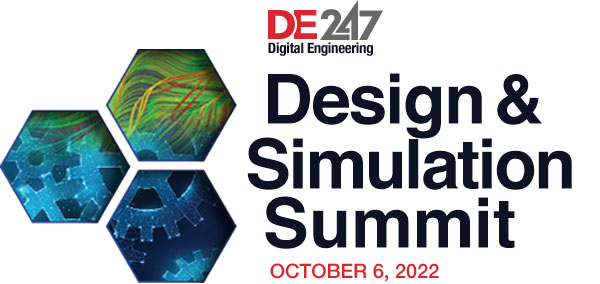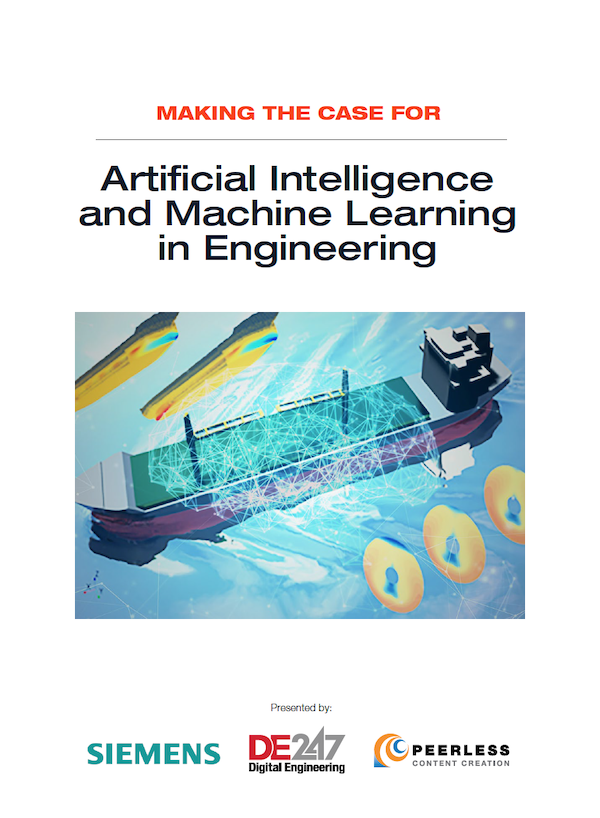Summit Roundup: Digital Twins in the Metaverse, AM Parts in Space Telescopes, and More
Presentations from 2022 DE Design & Simulation Summit focus on digital twins, AM parts, Sustainability, Systems Simulation.

October 11, 2022
Last week's DE Design & Simulation Summit drew 590 registrants on Oct. 6. Conference sessions this year included a keynote on the connection between digital twins and the Metaverse, along with presentations on 3D printing at NASA; sustainability in design; systems-level modeling and simulation; and selecting the right computer hardware for design and simulation.
This was the second annual Design & Simulation Summit, presented by Peerless Media and Digital Engineering. The half-day virtual event is focused on technology innovations that enable simulation-driven design and engineering applications.
In the keynote titled “Digital Twins in the Metaverse,” Dan Isaacs, CTO of the Digital Twin Consortium, discussed the potential challenges of enterprises deploying digital replicas of real-world products in virtual environments.
The adoption of digital twins is “happening across every major industry. We're seeing a tremendous growth of that,” said Isaacs. The consortium, he added, wanted to promote “not just the awareness of digital twins but the adoption.” He noticed what he called “the rise of the citizen data scientists, using low-code or no-code approaches.”
In the design track titled “Using Sustainability to Gauge Your Operational Efficiency,” Israr Kabir, Senior Manager, Emerging Technologies, ASME (American Society of Mechanical Engineers), discussed the “transition from the current manufacturing to green manufacturing methods.” He observed, “For Gen Z consumers, sustainability is increasingly important to their buying decision.”
Kabir viewed environmental, social, and economic aspects as the three pillars of sustainability. In simpler terms, “planet, people, and profit,” he said. The carbon measurement tools that are appearing in standard CAD software programs, he noted, “are very valuable because they make people start thinking about the products' energy consumption and environmental impacts.” As virtual product models mature, the tools' predictions will also get better, he added
In the AM-focused talk “3D Printing Led NASA Goddard to a Lighter Space Flight,” Ryan McClelland, Research Engineer, NASA GSFC's Instrument Systems and Technology Division (ISTD), discussed his experience using generative design to produce a 3D-printable part for a space telescope. Having stumbled on a case study about how someone uses AI-powered drawing program to generate avacado-inspired chairs, McClelland decided to explore generative design (GD).
People tend to be suspicious of GD results because “frankly they look a bit strange,” McClelland admitted. “But there isn't any additional risk in GD compared to human designs.” He pointed out, “GD uses known and predictable algorithms, but if you give ten human engineers the same requirements, you get ten different designs, depending on their seniority, industry experience, and how much coffee they have had that day.”
Troy Peterson, SSI Vice President and a member of the INCOSE Board of Directors, presented the “Systems Level Modeling & Simulation Challenges” session. While many organizations leverage models in their development processes, the integration of these models is often slow, error-prone and done via ad-hoc processes. In this session, Peterson explained how digital engineering can help address system complexity and enable digital transformation, and also share best practices and activities that are underway to help accelerate digital engineering adoption.
Advanced design and simulation require more compute power than ever before, so selecting the right engineering hardware infrastructure is critical. Designers can choose from advanced workstations sporting very powerful CPUs and GPUs, as well as leverage cloud-based compute resources and local clusters. Ryan Navarro, Product Manager for CFD Analysis at Hawk Ridge Systems, led a session titled “Hardware Recommendations for CAD and Engineering Simulation” that provided guidance on choosing pre-built systems and specifying components for custom machines for CAD, simulation and rendering. He also discussed the use of cloud-based CAD and simulation solvers.
Though here in the United States, Summit attendees came mostly from California, Texas, and Michigan, there were attendees tuned in from across the globe, including a large number from India, Canada and across Europe. All the tracks from the summit are now viewable on-demand.
Subscribe to our FREE magazine, FREE email newsletters or both!
Related Topics






